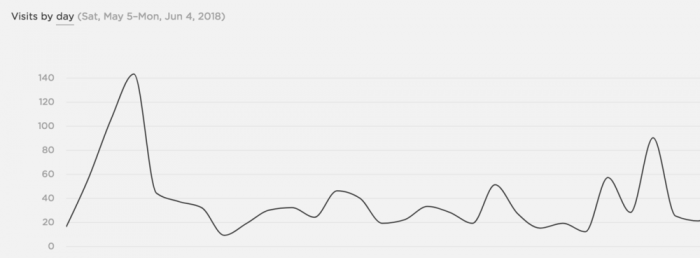
Another change involving fan interaction is how journalists are using online metrics.
The interviews I conducted showed that editors are aware of what kinds of stories are popular online, when during the day they are popular, and on what platforms the stories are being read (desktop, tablet, mobile). This information is influencing story selection, in that editors are shifting coverage to reflect the audience’s online behavior and desires. The changes in coverage were seen in how a college football reporter, and her editor I interviewed said they covered recruiting more because the online metrics show that those stories are extremely popular. This was seen in how a metropolitan sports editor, changed her paper’s coverage philosophy to one that put more emphasis on high school sports than local college sports (the opposite of the previous routine) after the metrics showed that high school sports coverage received far more hits.
Along with changing the routines (what sports are covered and how they are covered), this also reflects one of the norms and values in sports journalism that does appear to be changing. Coverage appears to becoming more and more focused on specific areas that metrics show to be popular among readers. This is an example of the symbiotic relationship between norms and values and routines. The routines of the individual journalists are changing, reflecting a change in the norms and values of the organization.
It’s not to say that sports journalists didn’t consider the readers in the pre-digital age. Sports journalism began in large part because it was content that was popular among readers and drove up circulation numbers. It’s just that now, journalists have concrete data showing what stories are popular and what readers are actually looking at online. The use of metrics in story selection is also part of the journalism-as-process model in action, with audience discussion fueling news judgment as much as news judgment fueling audience discussion. Also, as indicated in a number of interviews I conducted with both reporters and editors, metrics are also being used as a means to evaluate a reporter’s performance.
The use of metrics in story coverage and selection decisions suggests a new news value for sports journalism—audience popularity—that may sit alongside deviance, proximity, impact, and timeliness . The audience has been considered a news value, but metrics give this news value a degree of certainty and granularity it lacked before. The idea of what people are talking about moves from a vague journalistic sixth sense into something tangible and analytic.
(This is the part of a series of blog posts about sports journalism that comes from my 2014 dissertation, “Rooting for The Story.” Since it’s been a few years, and what’s been peer-reviewed and published from this is already out there, I’d ratherpost some of my findings here rather than let them linger in some library forever.)


